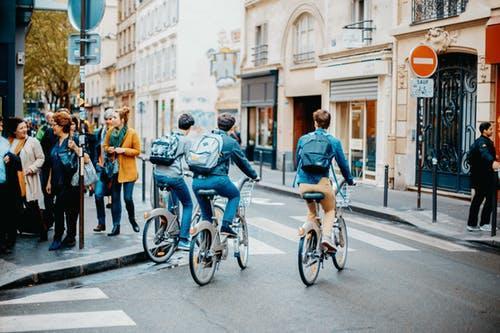BY SKIP DESCANT
Seemingly overnight, rent-to-ride electric scooters landed on city streets all across the country. In no time, the tiny two-wheelers jettisoned local governments to iron out legislation that would both allow the new forms of mobility and protect public welfare, outlining where the scooters can be used and parked.
In 2018 the rapid rise of e-scooter operations zipped past bikes as the preferred vehicle for dockless vendors, supplying some 38.5 million rides, according to a new report by the National Association of City Transportation Officials (NACTO). Today, more than 85,000 app-based scooters are available for rent in about 100 U.S. cities.
The rise in scooters and other forms of micro-mobility should signal a clear message to cities that they are here to stay and need to be planned for, say officials.
“As stewards of the public realm, it is vital that cities retain authority over their streets,” said Alex Engel, a communications spokesman for NACTO. “When cities, system operators and communities plan together, cities can ensure the best outcomes for their residents: providing truly reliable, affordable and easy-to-access transportation, expanding access to opportunity.”
The scooters fall into the same transportation category as bicycles. By this reasoning, they are low-impact forms of transit that do not require much infrastructure and represent a form of transportation that is both sustainable and does not contribute to traffic congestion. Scooters and bikes also represent an increasingly popular form of transportation for short trips and provided 84 million trips in 2018 — more than double the number of trips taken in 2017, according to the NACTO figures.
Cities and transit agencies have caught on to this micro-mobility trend, looking for opportunities to partner transit trips with a scooter or bike trip to close first-mile-last-mile gaps — moves largely lauded by transit advocates.
“To us, it’s not a problem if someone is replacing a two-mile transit trip with a two-mile scooter trip,” said Steven Higashide, director of Research at the TransitCenter, a transit research foundation in New York City. “Those are very space-efficient modes. They’re good for cities. That’s not a bad thing.”
And to be clear, if public transit seems to be in a rut — 2018 marked yet another year of transit ridership decline — bikes and scooters are probably not the culprit. Public transit agencies still supplied some 9.2 billion trips in 2017.
One of the shifts in micro-mobility that seems to be sitting well with riders is toward dockless vehicles, like e-scooters. In other words, systems that do not require the user to return the vehicle into a docking station and can simply park it at a bike rack or out-of-the-way location off a sidewalk.
“In the early days of micro-mobility,” said Regina Clewlow, CEO of Populus, a shared mobility data platform, “the Populus team found through our representative data from cities across the U.S. that dockless services — bike, e-bikes and scooters — were rapidly become more popular than existing docked bike-share services.”
The growth in dockless micro-mobility has been fueled by vast amounts of venture capital invested into various operators, said Clewlow, coupled with the ease of accessibility and the rise of smartphone-enabled mobility apps like Uber or Lyft.
The NACTO report found that when given a choice, riders tend to prefer e-bikes over conventional bikes, and more than half of bike-share rides are work- or transit-related. In fact, large bike-share systems like New York’s Citi Bike logs four rides per day, per bike across 12,000 bikes (including the winter months), the report found.
Some of this increase has to do with the changing nature of New York City streets, which are becoming more bike-friendly as the city rolls out better infrastructure, even though gaps still exist, said Jon Orcutt, a communications spokesperson for Bike New York, a safety and advocacy group.
“We have a lot of missing links,” said Orcutt. “[Like] when you have a really good protected bike lane, but then it drops you off into traffic.”
Despite the gaps in bike lanes, cycling is the fastest growing form of transportation in New York City, said Orcutt, though acknowledging that this could be due, in part, to slowdowns, delays and overcrowding associated with the public transit system.
Micro-Mobility by the Numbers
- E-scooter related bills introduced so far this year by state legislatures — 44
- Micro-mobility trips made in 2010 — 321,000
- Micro-mobility trips made in 2018 — 84 million
- After a 10-fold increase in fleet-size, percentage Ford GoBike in the Bay Area increased ridership — 260
- Percentage of all e-scooter trips that that took place in only Los Angeles, San Diego and Austin, Texas — 40
- Percentage of bike- and scooter-share companies offering discounts for low-income users — 30















